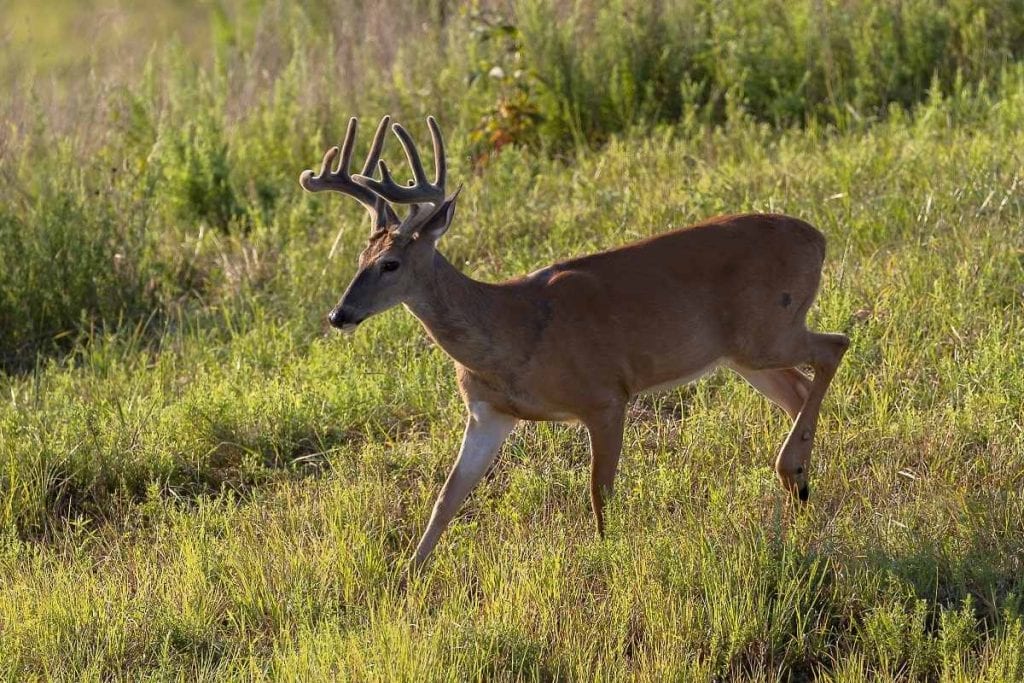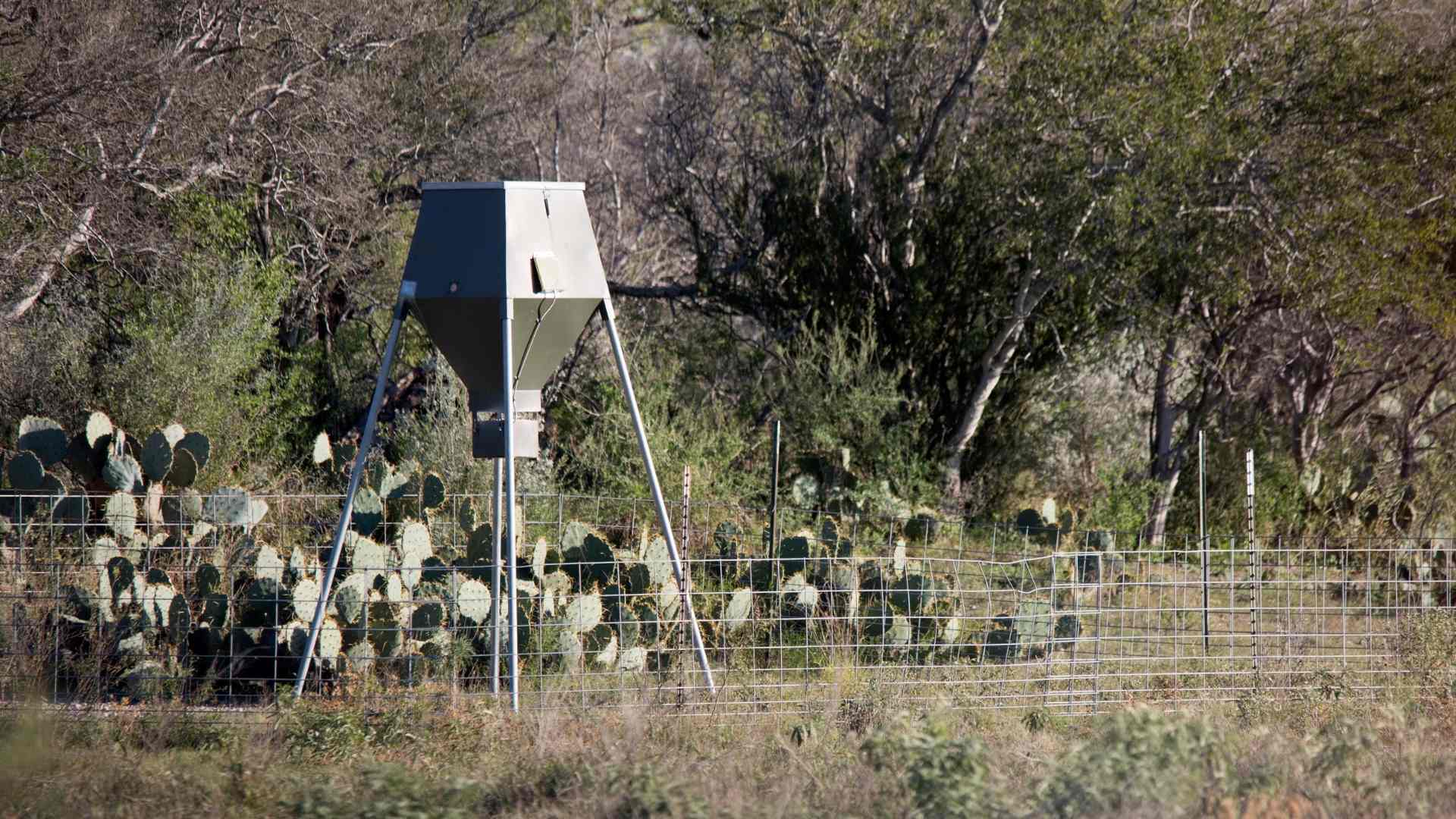For decades, hunters have sought to attract whitetail deer by various means, to increase their chances of success. Along these lines, a great number of hunters choose to employ the use of food-based attractants during any given year, where legal.
While a hunter’s success is far from guaranteed, deer are typically drawn to the sweet aroma of such attractants in numbers. So do deer like molasses? Yes – They do!
Commercially produced deer attractants feature a wide array of ingredients, which typically include grains, minerals, and sweeteners.
TL;DR
Both liquid and dried molasses are highly attractive to deer due to their sugary taste. Many commercial deer attractants contain molasses as it helps bind blocks and minerals while also drawing in deer from a distance with its aroma. Dried molasses can be used as a feed additive by topping grains or mixing into mineral licks, as too much pure sugar can cause health issues in deer. Always check regulations, as baiting is illegal in some states.
These attractants are also offered in a number of forms, such as blocks, liquids, and powders.
However, this has not stopped many hunters from attempting to produce their own food-based attractants, for use during deer season.
Contents (Jump to Topic)
ToggleWhen dreaming up creative attractant recipes, hunters often find themselves pondering what, exactly, a deer will, and will not eat. One such ingredient that commonly undergoes such consideration is dry molasses.
What Is Molasses?
Molasses is a thick, dark-colored syrup that is inherently sweet in nature. In all actuality, molasses is derived as a byproduct of sugar production. Sugar cane or sugar beets are processed to obtain their juices, which are quite rich, and unmistakably sweet.
read.. do deer eat grapefruit?
Once extracted, these juices are boiled to create sugar crystals, which are eventually strained and separated from the juice itself.
This thick processed “juice” is what we commonly refer to as molasses.
The particular “grade” of a molasses product is dictated by the number of times that a batch of sugar cane or sugar beet juice has been heated for sugar extraction.
Liquid Molasses VS Dried Molasses
As stated above, liquid molasses is the thick syrup that remains as a byproduct of heating sugar cane or sugar beet juices to produce sugar crystals. But what, exactly, is dry molasses, and how is it produced?
In reality, dried molasses is little more than liquid molasses that has been sprayed atop a “carrier” substance. This carrier most often comes in the form of grain meal residue, such as soy bran.
Ground peanut shells are another common carrier used in the production of dried molasses.
Dried molasses is most often purchased from a local farm/feed store, as such products are heavily used as a free-choice feed supplement for horses and cattle.
In such applications, dried molasses is typically spread over hay or feed grains.
Deer and Molasses
For a number of years, many commercial deer attractant manufacturers have been using liquid molasses as a binder when producing mineral/feed blocks.
Not only does molasses function well in this capacity due to its ultra-sticky texture, but deer also find molasses to be highly palatable as well.
In fact, molasses serves as the treat of choice for a host of wildlife species. Raccoons, wild hogs, and bears have all been known to gorge themselves upon molasses whenever and wherever possible.
Molasses is also known to attract wildlife for some distance, due to their sweet, yet potent aroma.
What About Dried Molasses?
So, we have already established that deer are drawn to the sweet flavor of liquid molasses. However, does the same also apply to dried molasses?
Not surprisingly, the answer to this quandary is also a resounding “Yes”. In almost every sense, dried molasses is every bit as palatable to a whitetail deer as liquid molasses.
Nonetheless, one should keep several points in mind when attempting to attract deer with dried molasses. The first of which is that dried molasses should serve as a feed additive, rather than as the feed itself.
This stems from the fact that excessive sugar/carbohydrate intake has been known to cause diseases such as acidosis in deer and other rumens.
Additionally, dried molasses can be overpoweringly sweet, especially when offered in large volumes. It pays to remember that deer do not readily encounter sources of pure sugar within their free-range diets.
Therefore, excess amounts of dried molasses can be somewhat off-putting to deer, in many scenarios.
How To Use Dried Molasses As A Deer Attractant

As previously mentioned, dried molasses is best reserved for use as a feed additive, when attempting to attract whitetail deer.
But what, exactly, does this mean? To simplify, dried molasses can be used to top almost any preexisting food source, as a way to increase palatability as a whole.
Many hunters choose to top grain-based feeds with dehydrated molasses. This is often the case in states where baiting is considered legal practice. One can enhance the attraction afforded by a corn pile or feeder, by simply topping this grain with a light coat of dehydrated molasses.
In most instances, little more than a coffee can-sized scoop of dried molasses is enough to do the trick.
Alternatively, dried molasses can be stirred into a bucket of water and trace minerals, to create the perfect solution for starting a mineral lick.
This liquid concoction can then be poured onto a bare spot in the soil, at which point it will leach into the ground below. Deer will return to this site for months, digging to expose any remaining molasses and minerals.
Check Your Local Game Laws
It is worth mentioning that one should brush up on their state’s game laws before attempting to use dried molasses as a deer attractant.
In some states, the practice of baiting is prohibited, while other states expressly mention processed attractants as forbidden.
Penalties for such violations can range significantly from state to state but generally include a hefty fine.
Therefore, it is always wise to take this into consideration, rather than taking a risk of violating the law. Some states even stipulate that no feeding of wildlife is to take place during specified times of the year.
Once again, a failure to heed to such laws can result in a criminal and civil penalty.
A Sweet Feast
If you wish to produce your own homemade deer attractant, few ingredients are of as much significance as molasses. Dried molasses, in particular, can be used to flavor otherwise bland offerings, such as oats and other grains.
Even more enticing, is the fact that a little goes a long way when using molasses as a deer attractant. Dried molasses, even in modest quantities, can prove to be quite the draw.
Though deer seasons across the nation have begun drawing to a close, there is still plenty of time to take advantage of dried molasses as an attractant.
This sugary-sweet treat is ideally suited to use at trail camera sites when attempting to perform post-season surveys.
By preparing a molasses-based attractant of your own, you can get a meaningful jump start on scouting efforts for the season ahead.






